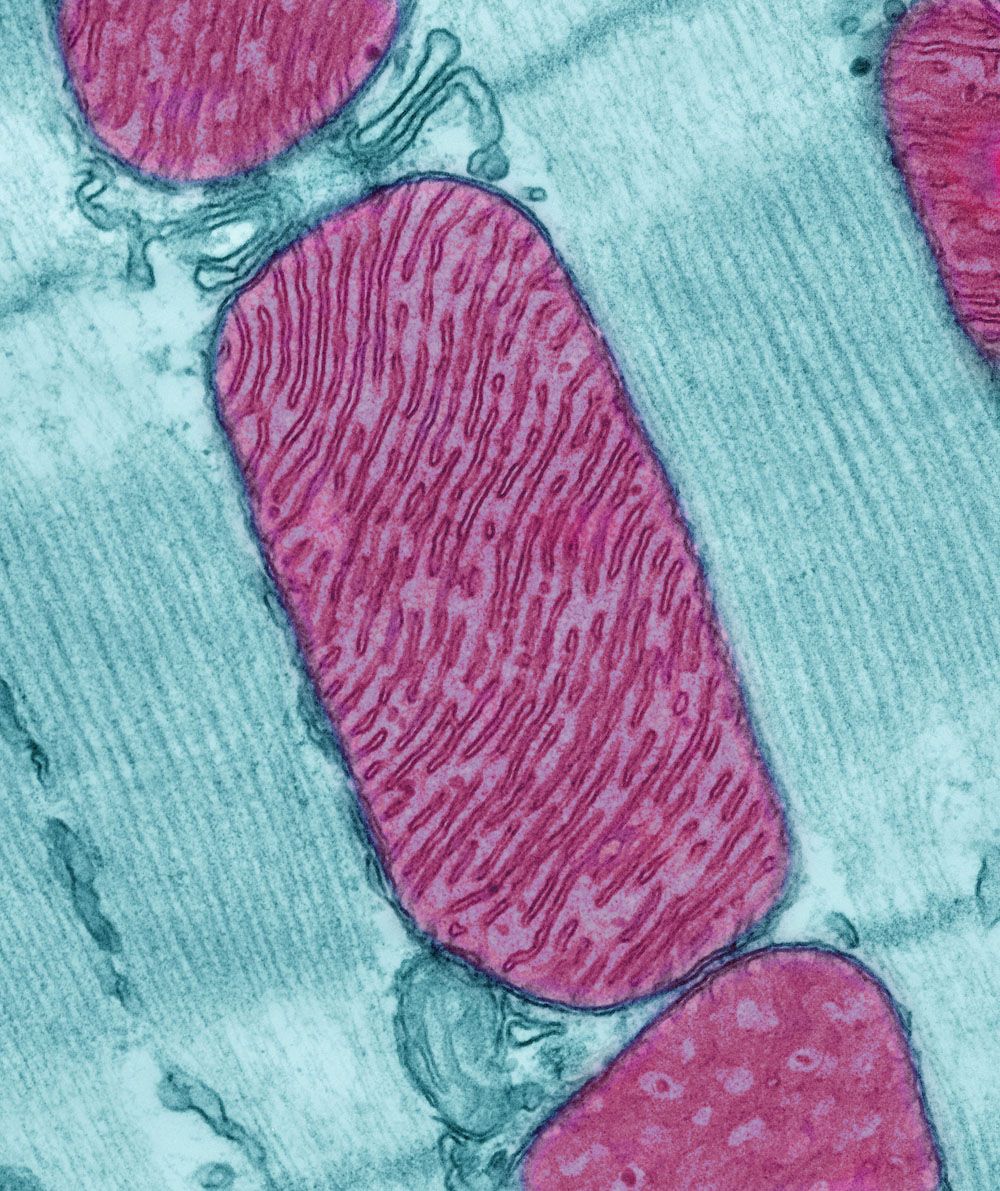Mighty Mitochondria Play Life-and-Death Roles in Cells

Meet mitochondria: cellular compartments, or organelles, that are best known as the powerhouses that convert energy from the food we eat into energy that runs a range of biological processes.
As you can see in this close-up of mitochondria from a rat's heart muscle cell, the organelles have an inner membrane that folds in many places (and that appears here as striations). This folding vastly increases the surface area for energy production. Nearly all our cells have mitochondria, but cells with higher energy demands have more. For instance, a skin cell has just a few hundred, while the cell pictured here has about 5,000.
Scientists funded by the National Institutes of Health are discovering there's more to mitochondria than meets the eye, especially when it comes to understanding and treating disease.
"Mitochondria started out being described as the generators of energy-rich ATP molecules," says NIH's Vernon Anderson. "But we're learning they do far more for the cell."
Mitochondria are critical to cell survival in a variety of ways. For instance, they store calcium ions, helping cells maintain the right concentration of these electrically charged particles involved in blood clotting, muscle contraction and other important tasks. Mitochondria make the iron compound that allows red blood cells to ferry oxygen to the body's tissues. They also are the initial production site for steroid hormones including cortisol, estrogen, progesterone and testosterone.
On the flip side, the organelles can contribute to cell death by shutting off the energy supply, producing damaging free radicals or releasing death-promoting proteins. Such activities can be part of a normal, programmed process to rid the body of unneeded or abnormal cells, or they can be part of an unplanned response to an overwhelming stress such as a stroke or heart attack.
These life-and-death roles are just a few examples of the many parts mitochondria play. "In some way, just about every cellular process is linked to mitochondria," says Harvard Medical School's Vamsi Mootha.
Sign up for the Live Science daily newsletter now
Get the world’s most fascinating discoveries delivered straight to your inbox.
For this reason, mitochondria are associated with a range of health conditions. Malfunctioning mitochondria have been implicated in neurodegenerative diseases, heart disease, diabetes, cancer and even resistance to radiation therapy. There's also a set of rare, inborn metabolic diseases that stem from genetic changes that alter the function of mitochondrial proteins.
A current challenge in — and goal of — mitochondria research is pinpointing exactly how alterations in mitochondrial machinery lead to disease. Achieving this involves mapping the many interactions among the proteins involved in mitochondrial function. So far, scientists have identified nearly all of the organelle's roughly 1,100 proteins and learned what about half of them do.
"I call it connecting the dots," says Jodi Nunnari of the University of California, Davis. "If we can create this comprehensive interaction network, we'll better understand how genetic changes that alter mitochondrial proteins and their function manifest in a disease."
This work, says Mootha, ultimately could transform the burgeoning area of mitochondrial medicine by offering new clues for developing therapies that restore or even enhance the organelle's performance.
This Inside Life Science article was provided to Live Science in cooperation with the National Institute of General Medical Sciences, part of the National Institutes of Health.
Learn more:
Also in this series:












